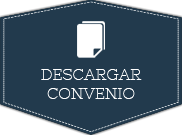The Faculty of Veterinary Medicine is located on an Agricultural Campus and has several livestock facilities where animals are housed in order to fulfill their teaching and research functions. In addition to those that you will find on this page, our students go to numerous livestock farms of all the species that are the object of study in Veterinary Sciences.
In addition, we have signed agreements with various livestock farms; among which we highlight:
Experimental Farm of the Cabildo de Gran Canaria
Installation attached to the Faculty in which we have space for housing cattle, sheep and goats.
Dairy Cattle Farm
Since August 2009, the company Compañía Canaria de Piensos SA (CAPISA) has had a dairy farm in Playa de Vargas (Agüimes, Gran Canaria). With an area of 15,000 square meters, and a capacity for 220 milking cows, the Agüimes farm currently houses a total of 300 cattle for the production of milk for cheese factories, the sale of meat and the fattening of calves. The University of Las Palmas de Gran Canaria has signed a collaboration agreement and is the reference farm for dairy cattle of the Faculty of Veterinary Medicine and the practices of its students.
Aquaculture
One of our singularities as a Faculty located in an archipelago is the teaching linked to the marine world. Our University has and has facilities for teaching and research in Taliarte (Telde) where our students come to carry out the practices of the subject "Aquaculture", an activity developed by the professors of the Aquaculture Research Group, one of the most powerful in research at our University.
Aquaculture
The GIA also has a space in the Melenera bay for the placement of floating cages, as well as collaborations with companies, having a total of 5,500 m3 for carrying out fattening trials on an industrial scale.
The experimental hall, with a total area of 990 m2, has a mechanical filtration system (5 µ) and ultraviolet sterilization.
The ship has:
- Marine fish fattening area: equipped with 3 2000 L tanks, 43 1000 L tanks and 73 500 L tanks.
- Octopus fattening area: includes 6 compartmentalized 2000 L tanks for octopus nutrition studies.
- Abaón culture area: They include a breeding area and a spawning induction area, larval rearing tanks, as well as a hatchery for the production of post-larvae. Several fattening tanks allow the performance of multiple nutrition trials. Live foods (microalgae and macroalgae) are produced in situ in facilities adapted for the production of benthic diatoms and in biofiltration units suitable for the production of macroalgae.


